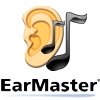|
Let's look at your hearing system..................
Your HearingThe auditory system,(your hearing) is classically divided into 3 parts, external (outer), middle and inner ear. The first two parts ensure the acoustical vibrations from the external air are transmitted to the liquids of the third part (inner ear).Once in the inner ear the vibrations are then transuded into electrical impulses, which then travel along the auditory nerve to the brain. Sound arrives at the pinna and is transferred through to the middle ear. However at this stage many functions are taking place within your hearing: Selection of sound wavesThe shape of the pinna works as a collector. If you have a hearing difficulty you will cup your hand around the pinna for help with your hearing. This principle was also utilized by ear trumpets. We can train our ears to listen to music
LocalizationThe shape of the pinna is very important to localization. Apart from the fact that we need 2 openings to tell which direction sound is coming from, one human ear alone can detect whether sound is above or below, in front or behind. Amplification of Some SoundsMeasurements taken at the tympanic membrane have shown a sound pressure gain of 15-20 dB across a range of 2-7 kHz (most gain is usually at 3000 Hz). The increase is due to resonance, which is the natural ability of an object to vibrate at a given frequency. So when sounds of a certain frequency enter the ear, there is a boost in the signal. *Resonance in the concha causes enhancement at 5.5 kHz * Resonance in the canal causes enhancement at 2.5 kHz Slight fluctuations in these figures are caused by the size of the ear or the orientation of the sound wave. Placement of a hearing aid into the outer ear e.g. a BTE ear mould will restrict the movement and thus have a detrimental effect on your ability to improve your hearing. This factor is taken into account when manufacturing hearing aids. ProtectionThe pinna and canal protect the inner workings of the human ear. The ear canal's tortuous shape prevents most things being forced down the ear and prevents damage to the tympanic membrane and prevents infection. The ear canal becomes more sensitive as you get into the bony section. How to recognize hearing damageThe effects of hearing off key or auditory damage can be different, depending on the duration of an onset, time taken before seeking help, family support, and lifestyle. The time taken to seek help is closely associated with the person's stage of grief, and attitude towards not being able to hear some of the frequencies of sound. Sometimes a person is told (by relatives or friends) to obtain a hearing aid before they are ready.The four stages of recognizing a problem with your hearing1. Numbness. It is usually the ENT surgeon (after referral from the person's GP) or even a hearing aid dispenser, who is involved at this stage to provide the initial diagnosis. Unfortunately the person is unable to take this information in at this stage. 2. Denial. The person refuses to accept the diagnosis and searches for a second opinion or a miracle cure. The person may look towards medicine or surgery for a cure to the problem. When such a cure is not forthcoming, the person may experience further loss: hope. 3. Despair.This is the stage at which hearing loss is accepted but the problems appear insurmountable. Positive but realistic counselling of the person and his/her family can help to move the person towards acceptance of the hearing loss and a desire to overcome them. 4. Action The person is now ready to accept amplification, counselling and training now inter-link to facilitate the person's adjustment to the hearing impairment and to the use of
|







